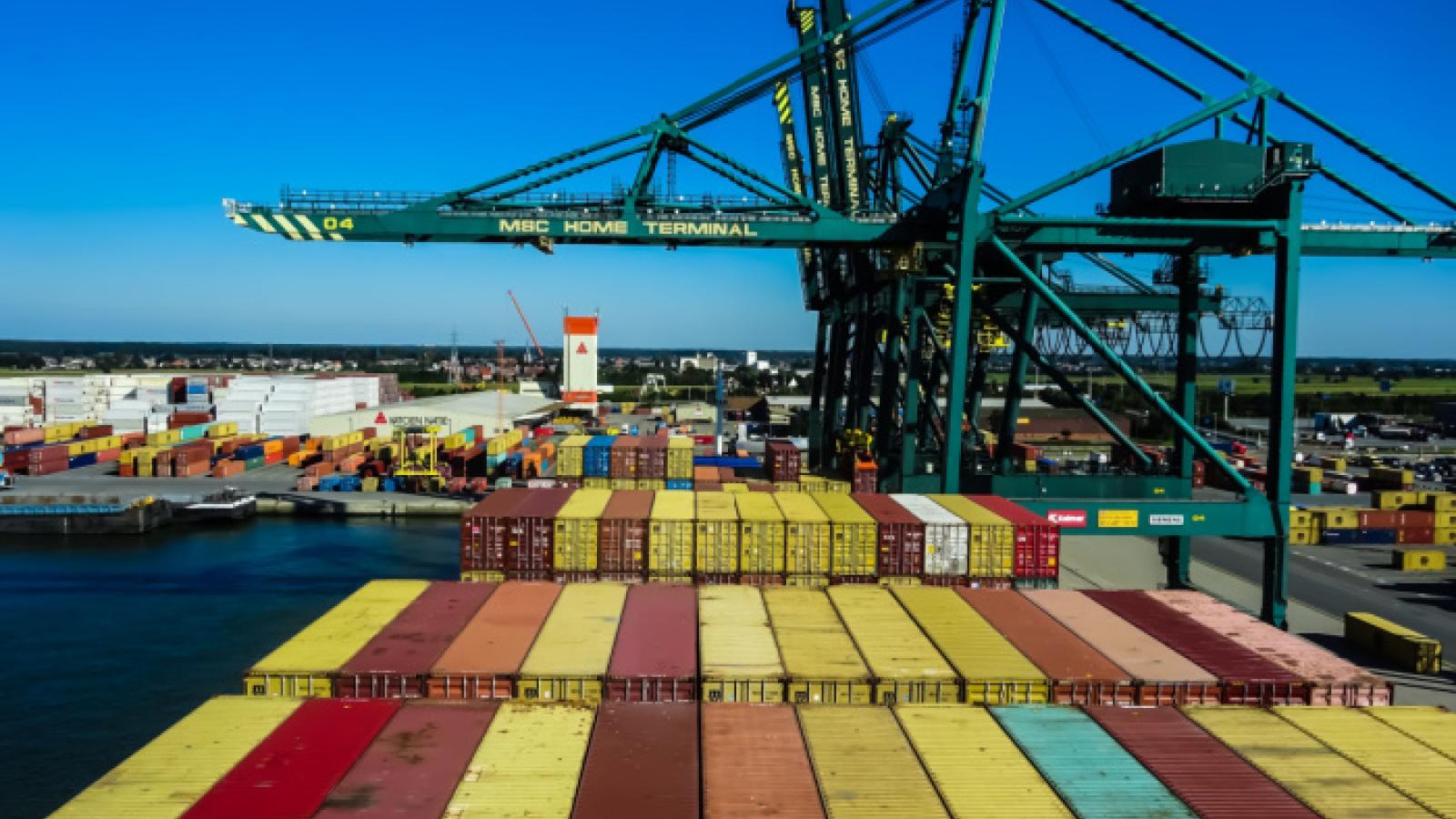 he European Union emissions trading system will include shipping from Jan. 1, 2024.
he European Union emissions trading system will include shipping from Jan. 1, 2024.
ANTWERP — Managing rising decarbonization costs has been bumped up the agenda for European shippers as they look ahead to next year’s carrier contract talks that will need to include green surcharges associated with shipping’s inclusion in the European Union emissions trading system (ETS).
Shippers emphasized the need for complete transparency from carriers that deploy “emission surcharges” to recover the cost of complying with the ETS that comes into effect on Jan. 1.
Maersk and Hapag-Lloyd advised the market last week they will be collecting an emissions surcharge from customers from the first quarter of 2024, with similar announcements expected soon from other carriers.
The news received a mixed reaction at the CrossStaff BCO Conference in Antwerp this week, with most of the cargo owners only now beginning to discuss internally the ETS impact on rate levels and how best to manage it.
Stephan Schiller, managing director of CrossStaff, which negotiates contract rates with carriers on behalf of a network of shippers, said beneficial cargo owners (BCOs) have been fully focused on their regional landside activities in Europe where companies are required by law to compile not only annual financial reports, but also annual sustainability reports.
“Up until now, BCOs have not seen the immediate importance of sustainability in relation to their ocean transport,” Schiller told the Journal of Commerce. “Tactically, in-house transport by BCOs has a higher emissions ‘countage’ compared to ocean freight, so there has been more emphasis on this area. But this is now on the BCO agenda and will be included in all our contract talks with carriers.”
Antonios Rigalos, managing partner at CrossStaff, said although the “green products” offered by carriers have not been attractive to shippers because of higher rates, limitations on certain trade lanes and the availability of lower-cost alternatives, once a cost was attached to all containers, that view would change.
“Next year when the ETS is imposed it will become a burden on cargo owners, and I believe they will be more receptive to the sustainable products offered by the carriers,” Rigalos noted. “This is a topic that is becoming more important to our BCOs and we will be tendering for the ETS in the next annual period.”
Certified green shipping products offered by the carriers, such as Maersk’s “Eco Delivery” and Hapag-Lloyd’s “Ship Green,” will avoid most of the CO2 emissions generated in a voyage and the savings will be credited in the ETS surcharge.
Reporting emissions, surrendering allowances
The ETS is essentially a carbon tax, and all ship operators will be required to monitor and report their emissions and surrender allowances for every ton of CO2 they emit covering all voyages within the European Economic Area and 50% of voyages ending or beginning in European ports.
Shipping will be required to pay for allowances covering 40% of greenhouse gas emissions in 2024, rising to 70% in 2025 and 100% from 2026.
So far, only Maersk and Hapag-Lloyd have put an actual surcharge figure on the costs per container generated by the ETS. To recover those costs in 2024, Maersk has estimated that on Asia-North Europe it will need to charge shippers €70 per FEU, while Hapag-Lloyd expects to charge €12 per TEU. North Europe to the US will generate an expected charge of €81 per FEU on a Maersk ship, while Hapag-Lloyd forecasts a charge of €9 per TEU for North Europe to the US East Coast.
The supply chain director for a European importer, who did not want to be identified, said his company has not yet discussed the ETS surcharge internally.
“We know about the carriers’ intention to debit the separate costs, and we know we will have to pay for the ETS,” the source told the Journal of Commerce. “We believe it should be structured as a flat rate included with all the other costs as a lump sum and (we) will be raising that at our next internal meeting.”
The freight buyer for a large European clothing retailer said the ETS surcharge would be included in their next budget cycle.
“We set our transport budgets for three years and the current period ends in 2025 so we are building the ETS elements into the next budget,” she said. “But we still don’t have all the information from carriers about the fuel surcharge and they will need to be very clear in what they want us to pay for.”
The need for transparency was a recurring theme from cargo owners at the BCO conference.
“The ETS surcharge has to be totally transparent, and we will want an invoice that shows exactly what we are being charged for,” the clothing retailer noted.
Said another shipper: “Carriers need to become greener, and it comes at a cost they will need to pass on to customers. We understand that, but we need to see the full calculations.”
Schiller agreed that transparency would be crucial for the carriers, or they risked customers viewing the ETS surcharge as “a commercial tool” rather than a cost-recovery mechanism.
“If BCOs get the feeling [they are] being used by carriers to simply get more money from them and not be 100% transparent in what the money is for, that will be a big issue,” he warned.

